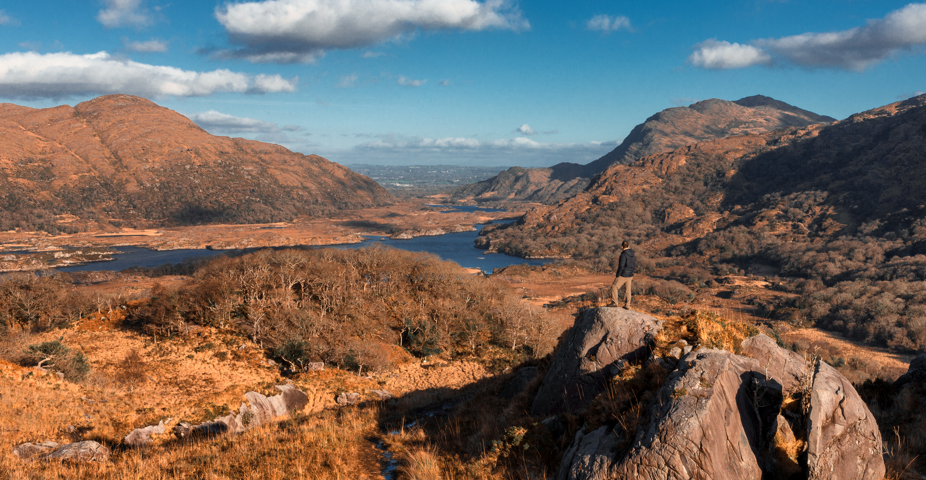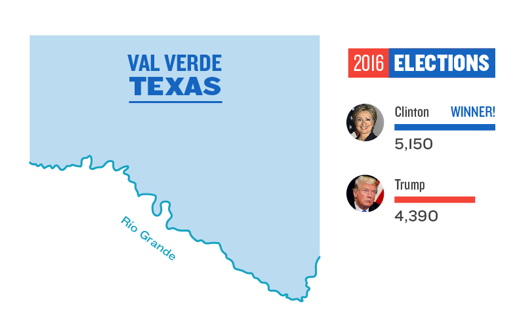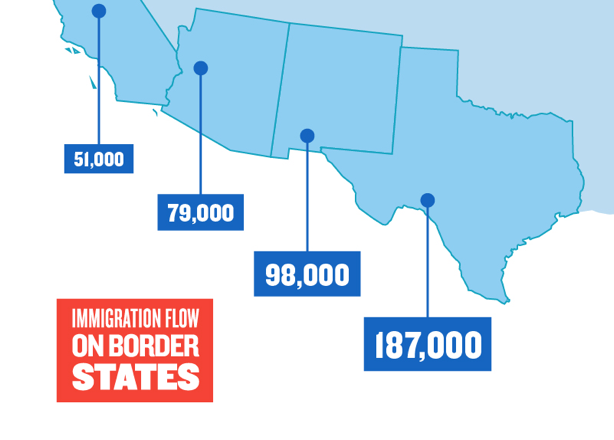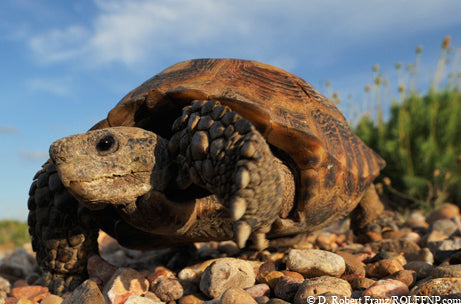The Plan
Introduction
Lest you think this project is fake news, let us tell you about the 8 months of research and planning that brought us here.
Some of the plans included herein are BRILLIANT, some not so much. But all are aimed at making our little fiefdom of land as obnoxiously difficult to seize as possible.
We would love to stop the wall in its tracks. That, however, is an unlikely prospect. If the federal government moves forward with plans to build the wall, and Congress approves funding, it is unlikely that our effort will be able to end that plan in its entirety. But do not lose hope! Our goal instead is to hold up the process with costly and time-intensive litigation. By doing that we can hopefully change the cost calculus that goes into making a decision to build the wall. We can also potentially create entire areas where the headache of building a wall just isn't worth it. Moderate Republicans may be able to stomach a $25B wall that covers 100% of the border, but what if it was a $100B wall that only covered 60%?
Yes, we could accomplish the impossible. We could make Donald Trump's wall even more pointless.
"We will fight the government at every turn, making our little Texas oasis a giant hurdle for wall construction"
- Us, Americans Against Building a Godamn Wall (AABGW)
How it technically works
Let’s go over the details of how this whole thing works. We currently own land in Val Verde County just about 1 mile SW of Del Rio, Texas. We’ve divided this land in 8 different lots and then created separate ownership for each lot. When you purchase land, we will assign your name to one of the lots and we’ll carve out a section of the lot to be designated as yours.

When you purchase you’ll sign a Tenancy-in-common agreement that stipulates essentially that you are ok sharing ownership of a larger lot, and that you are ok with us making decisions for the lot. If you want to see a line by line explanation of the document you're signing, click here. After everything is signed and filed, we’ll ship you out a happy package that includes a Quit Claim deed to your specific piece of land.

A tenancy in what? Yes, that. First off, “tenancy” in Texas law doesn’t mean “renter.” It actually means “owner.” Sorry for all of you that just had flashbacks to the worst landlord you've ever had.
Why are we doing it this way? For a number of reasons. For one, when the government comes a-knocking they’ll have to bear with the fact that our land is jointly owned. They’ll have to maintain that every person with an interest in each subdivided lot has been notified and are represented. Not only is it harder to know who has an interest in the property through a TIC, but they can’t force us to break the rules in our tenancy agreements. We can use this as a delaying tactic. The more legal layers the better. Secondarily, it’s just a matter of logistics. We could outright sell each piece to each person, but that would mean you would have to deal with a lot more legal BS on your own. We obviously don’t want that, so a TIC agreement allows us to run the show on your behalf and to never involve you.
What's a Quit Claim deed? It’s just a type of deed that says “I own this land” with a description of the exact space and coordinates of your ownership. There are other types of deeds, such as Warranty Deeds, but they just require more steps to get the same thing done. Quit claims are the simplest way of transferring ownership, and even allow us to get your deed notarized for you without any action on your side. If you really want to get into the weeds on this click here.
Now that we know the general overview of how this works, let's talk about what kind of swag you get for becoming a supporter (and landowner).
After purchase, we’ll start processing everything and will send you a packet that includes:
- A GPS shot overview of the exact location of your mini kingdom. Printed on glossy part that is oh so glossy.
- Your land deed. Notarized, signed, and ready for you to gloat upon.
- A coffee table book that goes into depth on what we’re doing, how we’re using the money you gave us, why it’s important, and why it’s simultaneously hilarious / fun.
- A handful of die cut stickers. Depending on which poor bastard here processes your order you’ll get either a couple decals or a whole bunch of them.
How did you first decide on this land?
We took a lot of things into consideration when we purchased this land. We wanted to find a spot that:- Was located where Trump would / should build his wall
- Wasn’t going to bankrupt us
- Had favorable laws for landowners

- We wanted a jurisdiction with a judge who wasn’t likely to prioritize eminent domain cases and personally wasn’t likely to view the wall favorably
- We wanted an area with a proven record showing its use for border crossings
- We wanted an area with a handful of endangered animals on it

In our case, we have two judges: Chief Judge Orlando Garcia and Judge Alia Moses.
In both cases, we have no real reason to think either judge will be Pro-Wall. Chief Judge Orlando was appointed by Bill Clinton and recently passed down a ruling saying that Texas’s law prohibiting sanctuary cities was unconstitutional. Alia Moses, while appointed by Bush, is active in Latino organizations and has a docket overflowing with immigration cases. We don’t expect her to prioritize the wall over the overwhelming backlog that's accumulated.
Of course, Judges must be neutral and usually are. What their personal politics can influence, however, is how they prioritize each case.
To the next point, it is an area used for border crossings, and therefore presumably should be part of the wall.
Del Rio is a small border town with a population of 35,964. In Fiscal Year 2017, the Del Rio Border Patrol apprehended 13,476 people attempting to enter the country illegally. If the idea of the wall is to reduce this, then it seems unlikely they won’t address this giant gap the size of... well... Texas.

One popular misconception is that the Rio Grande acts as a “natural barrier” and that a wall wouldn’t be needed there. As you can see from the stats above, it doesn’t seem to deter border crossings and if you’ve ever SEEN the Rio Grande you know that it's not exactly the Mississippi River. Over the last 30 years, river levels have decreased substantially. In 2012, the Rio Grande near El Paso actually dried up completely. In Big Bend National Park, just west of Del Rio and along the Mexican border, the river began drying up in the early 2000s, and by 2003 was reduced to pools of stagnant water. So much so that in our area you could easily just wade across.
On the last point, we’re lucky to be inhabited by a number of endangered species. Specifically, we have the Texas Tortoise, which is one hell of an evolutionary anomaly if I've ever seen one. More on the turtles later.
How does this stop eminent domain?
First off, in order to better understand this section, I’d suggest reading our separate page on what eminent domain is and how it works. The short of it is that it's a legal process through which the government (and sometimes private companies) can seize land for a project that's meant for “public use.” In this context, “public use” use just means that it's intended to benefit the public as a whole (not that it's intended to be used by each member of the public or is even a popular idea). Typically, this means hospitals, roads, dams, and NOT 12th century cement slabs.
Eminent domain is quite all encompassing, unfortunately. The only way to truly STOP eminent domain is to convince the government to stop pursuing its suit. It’s fair to say that if the government wants land, they will get the land. However, a particularly determined landowner can make the process drag on for an extended period of time, sometimes in excess of 5 years. And luckily, we will be in a Texas court, where state law says that we have the right to request a jury trial to determine what constitutes the “just compensation” that our Fifth Amendment entitles us to. With midterms in November, and God willing a Democratic president in 3 years, we believe there’s a good chance the government would abandon their claim on our land on account of the expense and lost interest.
Let's take, for example, the 2006 Secure Fencing Act passed by George W. Bush. The bill works in virtually the same way that any theoretical wall bill would. It directed the Secretary of Homeland Security to “take all actions the Secretary determines necessary and appropriate to achieve and maintain operational control” over the border. It originally called for building a fence along certain specific stretches of the Southwest border, but was amended by the 2008 Appropriations Act to build fencing “along not less than 700 miles of the Southwest border." In order to do this, the government had to file at least 442 lawsuits involving nearly 700 property owners.
Of those 442 lawsuits, there are still nearly a hundred tied up in court because the landowners simply refused to allow the government to purchase their land. Some of the cases are still open, because after spending a decade searching for the rightful owner, the government is still unable to find them. We also have cases where after facing years of resistance, the government completely abandoned their claim to the land. An example of this is Aleida Flores Garcia, who received a condemnation notice from the government, but years later and without explanation, got her land back. Just like any other project, the government has to do a basic cost/benefit analysis. What's one more section of wall if it's going to cost an exorbitant amount of money and time?
What else are we trying
One could say our strategy for stopping the wall is to throw the legal kitchen sink at it. Not everything has to work, but if we take enough shots at it, we can impede their progress. Throw enough mud at the wall, and some of it will stick.
Landowner education
Every time you purchase a piece of land, we’re going to earmark a certain amount of your total price for what we call “landowner education.” Along the 1,200 mile Texas-Mexico border, there are an estimated 5,000 parcels of land. And unlike the other U.S. border states, nearly all of the border land in Texas is privately owned. Of the people who own this land, it is estimated that only about 20% of them will accept the government's initial offer to buy. That combined with the fact that Trump lost the election in 10 of the 15 counties along the Texas border (and had a mere 39% approval rating statewide as of January) leads us to believe that landowner education efforts are worthwhile.
For most landowners, the idea of going through civil litigation for a portion of their property is a headache at best. Not only is it something they dread doing, but more often than not, they don’t know their rights against eminent domain. We’re going to spend considerable effort educating each landowner about the process and what they can do to resist it.
Our outreach will include but not be limited to:
• Mailing physical pamphlets explaining their rights and what to expect
• Reminder mailings notifying them if eminent domain proceedings have been posted, how to respond, and including forms and templates they can use
Turtles
Eminent domain is a pretty all-encompassing legal tool (no wonder people hate it so much), but it does have one Achilles heel: The Endangered Species Act.
Passed in 1973 by a 531-4 vote of Congress, the purpose of the Endangered Species Act is “to protect and recover imperiled species and the ecosystems upon which they depend.” Particularly important is that within Section 7, it directs all federal agencies to “insure that any action authorized, funded, or carried out...is not likely to jeopardize the continued existence...or result in the destruction or adverse modification of habitat” for any endangered or threatened species.
Since its passage nearly 45 years ago, the Endangered Species Act has been the basis for numerous lawsuits seeking to halt construction in areas where development could lead to the extinction of a species.
This makes sense. We want to protect vulnerable animal populations and building a condo in the middle of their crash pad isn’t exactly going to help their odds of survival.
Note: The Real ID Act, passed by George Bush in 2005, gave Homeland Security the authority to waive any law that could interfere with the construction of “barriers” along certain areas of the border. But the legality of these “waivers” is currently being challenged in the Ninth U.S. Circuit Court of Appeals as well as the U.S. District Court for the District of Columbia. We are closely following these lawsuits as they develop and paying close attention to any attempts to waive relevant laws in our area.
Well, wouldn’t it be great if we specifically owned land with an endangered species on it? Good news! Our little Plots of Paradise in Val Verde County happen to have a number of species listed as endangered by the U.S. Fish & Wildlife Service. We also have a species that is near and dear to the hearts of our Texas neighbors:
Meet Gopherus berlandieri, aka “The Texas Tortoise.”

While this particular endangered species isn't protected under the Endangered Species Act, it has been listed as threatened by the State of Texas for decades. The State of Texas doesn't have a conservation plan for the Texas Tortoise and there aren't any recent studies on its population. Therefore, we could make several different arguments in favor of the protection of this endangered species:
1) We could argue that the State of Texas has been negligent by not creating a conservation plan for the Texas Tortoise.
2) We could argue that the U.S. Government has been negligent by not listing the Texas Tortoise as an endangered species under the Endangered Species Act (insert the part that says this is their job).
3) We could argue that without any official studies on the population size, we have no way of knowing how building a wall through the Texas Tortoise's habitat could irrevocably affect their population. The border wall could literally kill the last 50 tortoises in Texas!! Until studies are conducted on the specie's population, we have no way of knowing that this isn't the case.
Yep, we decided to buy land exactly where this turtle (sorry, tortoise) lives and squirms.
Apparently, this boxed creature has been listed as a “threatened species” by the State of Texas since 1977. And if someone does get the idea to “take” this adorable little reptile more than twice, they could find themselves facing a $4,000 fine and up to a year imprisonment. Native to Southern Texas and Northeastern Mexico, the Texas Tortoise is the only tortoise species in Texas, where fossils date back to 10 million B.C.
Since being discovered as a photogenic pet, their numbers have dwindled. Also, they really struggle with fences. And according to the Texas Parks and Wildlife Department, an individual Texas Tortoise has a home range of less than a city block and will most likely die if displaced from this area.
And can you really get a better name than “The Texas Tortoise”?
Who better to advocate for the rights of this evolutionarily-challenged turtle than a group of determined citizens? Many of the current landowners in this area aren’t even aware that they have the turtle in their area at all.
Native American land
People hate when the government takes their land. This frustration isn't limited to just Rand Paul, it affects entire communities where it happens. It's a force of disruption among an otherwise tight-knit group of landowners.
You know what people hate even more than the government taking a random landowner's land? Taking land from Native Americans.
When the Dakota Access Pipeline was built, there was a huge response from not only the domestic news media but also the international media. There were months of protests that involved protesters clashing with police and private security guards and nearly 700 people were arrested. Throughout the protests, hundreds of people were injured and Amnesty International issued a statement about law enforcement's abuse of the protesters' constitutional and human rights. The controversy led to one of the largest gathering of America's indigenous tribes in modern history, as well as a huge outpouring of support from U.S. Veterans. Throughout the country, thousands of people marched and several cities declared their support for the Natives and their cause.
And well, it makes sense. We are currently the non-original occupiers of this land and the way we came about acquiring it is something we as a nation find disgraceful. We're supposed to be past the age of taking land without recourse and disrespecting the customs of local groups.
That's precisely why we are reaching out to the Kickapoo (near Eagle's Pass, TX), the Ysleta del Sur Pueblo (near El Paso, TX), and the Tohono O’odham (of Southern Arizona and Northern Mexico). Each of these tribes is local to the American Southwest with tribal land located either on or within a close proximity to the border. Naturally, they're inclined to help stop the wall with us. In fact, the Tohono O'odham have publicly stated, “Over my dead body will a wall be built.”
Now, if the government tries to take this land, it is once again an example of the government disrespecting sovereign rights and being the aggressor. That's a PR nightmare.
It also turns out that there is a good legal argument for denying eminent domain of Native American owned land.
You see, according to the treaty of 1848, the government is only entitled to use the land they negotiated for. If the government wants to re-possess land again from Native Americans, the treaty has to be modified or nullified, which requires an act of Congress. Our Congress deservedly has a lower approval rating than cockroaches & Genghis Khan (not necessarily together), in large part due to their inability to pass ANYTHING (they even struggle to name post offices).
Example of the above
So, we have 2 hopeful angles with this:
1) We can raise the publicity and public profile of the land seizure
2) We may be able to argue that in order to legally take our land, Congress must modify the Treaty of 1848.
Overlapping claims
This strategy goes hand in hand with the deed you'll be receiving. Notice how the deed we're giving you is called a “Quitclaim” and not something... you recognize? Quitclaim deeds are not only the fastest way to transfer land, they're also potentially the messiest.
Why is that? Because when you issue Quitclaim deeds the person selling the property doesn't guarantee anything about the land. Landowners might find it advantageous to guarantee things like having a clear title, that no easement rights to their land exist, and that they in fact own the land outright.
Turns out, anyone can write a Quitclaim deed and in Texas the requirements for doing so are laughably thin.
We're going to use this legal ambiguity to our advantage. When the government takes land, they need to know WHO they're taking it from. Quitclaim deeds (hopefully in the thousands) make this a messy process and the burden to straighten everything out falls on the government.
We may even employ the bizarre and rarely used tactic of suing ourselves. Yes, we will take ourselves to court. Ridiculous as it sounds, in order for the government to officially take land they need to know who they are taking it from. In order to answer that, outstanding disputes need to be settled first.
Imagine if you were Donald Trump and you wanted to buy a car. You find the perfect one. It's got everything you need: a kids sized steering wheel, an extra large rear view mirror that only points at you, it is made by people working at Toyota with 100% authentic-sounding American names. Really it's a Tonka truck. Anyway, this clown car is owned by two brothers, who currently can't agree who the car belongs to. How do you buy the car? Who do you pay?
Churches
Alas yet one more thing we're going to try. The effects of Eminent domain proceedings, as stated before, are felt primarily by the local community that has to deal with them. We're located in Southwestern Texas, where the federal government isn't exactly the most popular guy in town. Texans like BBQ, trucks, and not being harassed about their land. Who could blame them?
There is, however, one thing that they dislike even more than government overreach: the government taking land from a church.
While, there is no legal justification for a using church groups to stall eminent domain, it does help us publicize what's happening on the border. For instance, a group of nuns in Pennsylvania got a lot of attention recently when battling eminent domain of their land to build a pipeline. They built a “church” in the pipeline's path and argued in court that, because their religion is opposed to destroying the environment, building a pipeline through their land would violate their rights under the Religious Freedom Restoration Act, 42 U.S.C. § 2000bb, et seq. (while it is doubtful that they will ultimately prevail, a ruling on the matter is still pending in the appellate court). For the same pipeline, Native American and environmental groups were able to get a judge to issue a temporary halt in construction pending further review of the project's environmental effects and “public necessity.”
Even though it's the federal government taking the land, it's up to a Texas judge and a jury of local residents to decide how, when, and for how much the land gets sold for. An unappreciative populace could help us in our struggle.
Our future plans
Our path forward is pretty straightforward. Since we object in so many ways to the southern monstrosity, that’s our main goal. We’ll do anything we can to make building wall on any land we own a pain in the ass. We’ll use the full extent of the law to our advantage, and if we’re really pushed we’ll even deploy endangered turtles.
There are a number of things that could happen:
Your glorious cause attracts many new donors:
In that case, we’ll do a number of things
1) We’ll buy more land. Val Verde was a great start, but we’d love to really get in the thick of things in Arizona and New Mexico. These are high on the priority list for Trump, but have a higher barrier to entry (land is way more expensive). With the wind at our back, we’ll bring our beautiful brand of obstinacy to The Land of Enchantment and whatever Arizona is called (Land of Dry Skin).
2) We’ll expand our landowner outreach program. We think (and our lawyers tell us) the most cost effective way for us to combat the wall project in its entirety would be to help others do the same. Currently we’re planning on disseminating information, but with extra finances we could potentially offer actual legal counsel and even help other landowners draft responses.
Trump starts to build his wall and we get summoned to battle:
We’ll do exactly what's stated. We’ll do everything we can to stop or seriously delay the process. We’ll publicize what's happening and try to win favor with local politicians. We’ll make sad videos of adorable turtles being relocated.
Trump's wall peters out and falls apart like one of his business ventures:
In this case, we’ll first celebrate and then second donate the land. Since we can’t think of any way to realistically use the land ourselves (unless you think it’d be funny to throw a party on a 1 sq ft piece of land), it makes the most sense to find someone who is working on a worthy cause and can use the land. We think paying it forward fits with the ethos of what we’re trying to do. You can read more about this in the FAQ.

